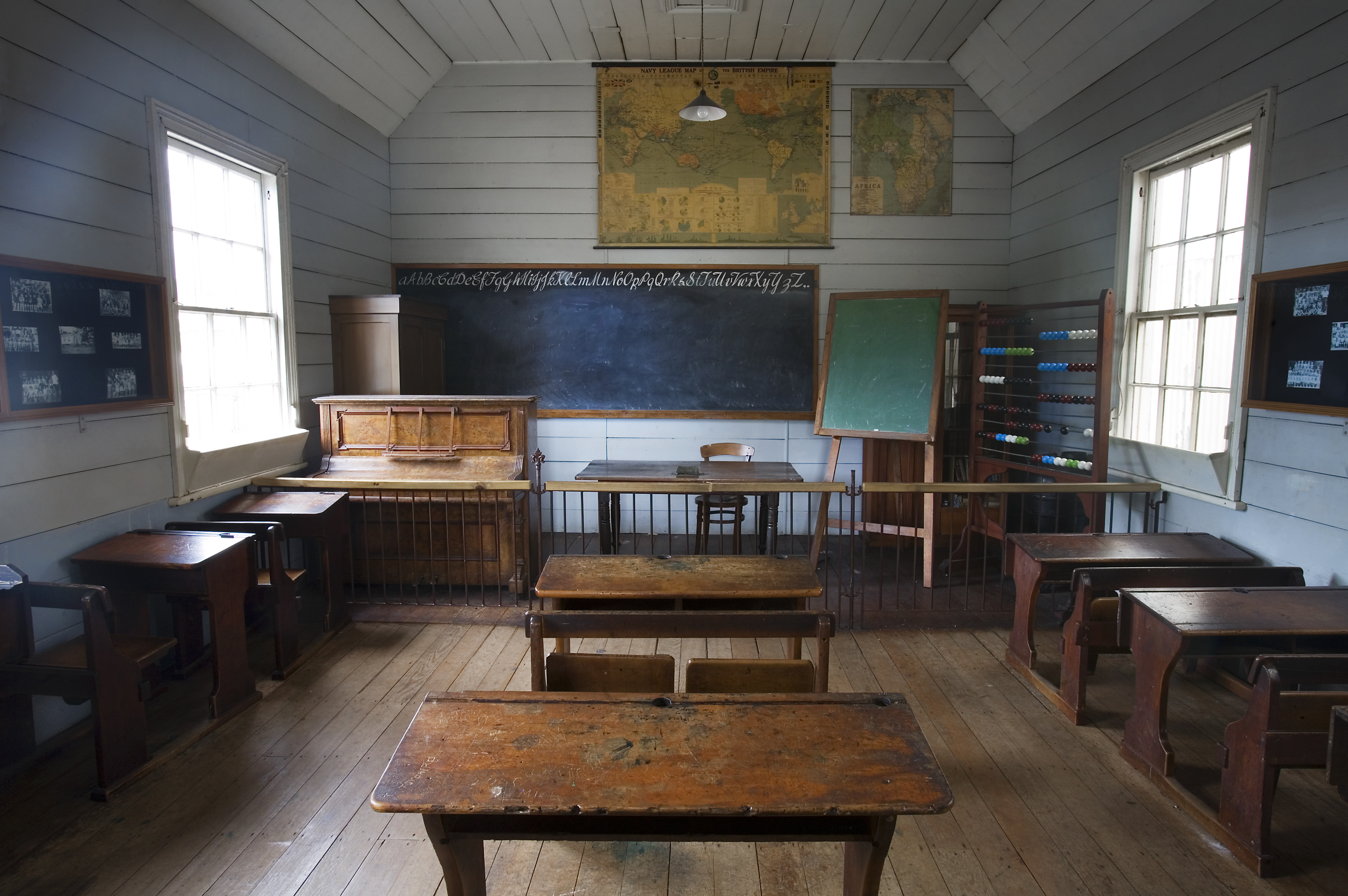
For Sallie.
By Picture Day in November, Sophie had perfected the downward stab and counting to twenty. She clenched her soft fingers around her rainbow pony pencil, raised her fist high, and then smashed it down on the practice balloons, barely wincing when they popped, scolding when they escaped. The other children rallied to bounce stray balloons back to her desk. She got thirteen, fourteen at last, and from there it was an obstacle-free trip to twenty with her peers chanting along. She hadn’t yet mastered our Go protocol for intruders, but neither had a handful of the general education students. However, Caleb could shout Go instantly and often got to the Rubber Man first, tackling its knees to disable the joints. Jazzmyn was the most formidable of all the students; when the Rubber Man dropped from the ceiling, she’d grab my scissors on the way and disembowel it in two slashes.
Picture Day is tense for second-graders, with the boys trussed up in buttoned shirts, the girls eyeing each other’s frilly dresses, and the lunch cart loaded with chocolate pudding and meatballs with marinara. Caleb endlessly adjusted his bowtie and Jazzmyn fretted over a smudge on her yellow pantsuit. But Sophie was thrilled with her rustling crinoline and the biggest blue bow that anyone had ever seen. When they lined up for their scheduled foray to the library for pictures, she sashayed to the end of the line, tossing her cascade of red curls and humming softly, off-key. Todd was the only one left at his desk, digging out torn pages and broken pencils—looking for one of the pocket treasures I pretended not to notice, his tiny plastic dinosaurs. Sophie called out, “Todd, we go now!” and jabbed her finger at the spot in line behind her, right beneath our Superstar of the Week bulletin board where a large-as-life photo of Sophie scowled at flashcards, surrounded by an array of exploding stars.
Todd pretended not to hear her. They used to be the best of friends, building tiny dinosaur colonies in the sandbox and sharing their turns to feed our guinea pig, but then his mother met Sophie at the Food Culture Festival last week, and he had ignored her ever since.
“Come on, Todd!”
He turned from his desk at last and jostled into the line in front of Sophie, muttering something that I didn’t catch.
It must have been bad, because Jazzmyn decked him. Fist to his cheekbone, she sprawled him right out on the floor, then loomed over him with her fists on her hips, her face resplendent with fury. “We don’t use that word in this class,” she shouted. “We don’t use that word ever!”
“Jazzmyn!” I swooped in to inspect the damage. No nosebleed, and his eye was intact.
Jazzmyn burst into tears when she saw my expression, then collected herself enough to run to the sink and wet a paper towel for Todd’s swelling face. Ms. Jackson, my morning aide, logged into our classroom portal to open an incident ticket.
By this time, Sophie had flung herself to the floor beside him in a swirl of yellow and white skirts. “Todd, you okay? You okay?”
Todd finally caught enough breath to begin howling.
“He’ll be fine,” I told her. “Go with Ms. Jackson so I can take care of him.”
Ms. Jackson gathered up Sophie and guided the children down to the library for the scheduled pictures, and then I buzzed the office for security clearance to walk Todd to the nurse. He still whimpered and clutched the towel to his eye. Jazzmyn came, too—she’d be wanted at the principal’s office.
We escorted Todd to the clinic, and then I steered her toward the main office. She stopped me outside Melkan’s door with a hand on my sleeve. “I had to do it,” she said between sobbing breaths, and then leaned in to whisper, “He called Sophie a tard.”
That word, in all its forms, is banned in my classroom.
“Jazzie,” I said. “You can’t hit another student, ever. Not even when they say something horrible. It’s your job to protect each other.”
Jazzmyn nodded once, quickly, her lips pressed together. My policy is to not have favorites, but I loved Jazzmyn for the meticulous care she took of everything: wiping the crumbs from her bento boxes with a paper towel, coloring every millimeter of the day’s vocabulary coloring page with crayons–even the bubble letters and the background spaces–and persisting with practice drills until her form was perfect.
“Will they call the cops?” she asked, almost keeping the quaver out of her voice.
“No.” She may be Black, but she’s only seven years old.
“Will I get suspended?”
If Todd’s mother raised hell, Jazzmyn could get expelled, but I didn’t tell her that. “Let me talk to Mr. Melkan first,” I said.
“If I get suspended,” said Jazzmyn, “I will never get into Wellesley.”
Melkan buzzed me in then, so I was spared the need to answer. I entered his lair while Jazzmyn perched in the center of a chair in the reception area, fists tucked together in her lap.
Melkan liked to carry gallon-sized promotional mugs from gas stations. That day he stirred half a dozen scoops of protein powder into his 64 ounces of coffee while I explained the situation.
“She’s out,” he said.
“Please,” I said. “Todd used a slur against Sophie, and Jazzmyn responded instinctively. She won’t do it again, now she knows what she’s capable of. Review the surveillance tape. Her aim was perfect. I’ve never seen anything like it.”
“We shouldn’t give her the chance to do it again,” said Melkan, but he was already clicking through the surveillance queue, intrigued. The walls of his small office were lined with large-screened monitors, barely leaving room for his collection of ultra-marathon numbers, the plaque declaring Stoney Creek Elementary last year’s Hardened Target Regional Winner, and the AR-15 hanging over his office door.
“Plus, her first quarter grades are off the charts. We need her here next week for standards testing,” I said.
“You need a genius around to offset Sophie Clark. That child can’t even count to ten. You chose her for your class. You worry about the test scores.”
I kept quiet and let him watch the video. He winced when the punch, replayed in slow motion, sent Todd flying in a smooth arc to land on the floor, where he bounced gently—one, two, three times. Melkan looped the video and leaned in closer.
At last he turned back to me. “Her aim is flawless.”
“They’re the best group I’ve had. Jazzmyn is so good—have you looked at the Rubber Man logs? They took him out in 12 seconds last week.”
He looked impressed, then doubtful. “That’s impossible. Just number two pencils?”
“Jazzmyn had my scissors. She punctured all the vital pockets single-handedly.”
“You started second graders on teacher scissors?”
“Just the ones who can handle it, if they want to stay in from recess to work. Just Jazzmyn and Caleb.”
He swiped through the logs, comparing our performance to the other second grade classrooms. We were leagues ahead of the others.
“Sure you aren’t inflating the reports a bit?”
“No, sir. You know it’s automated.”
Melkan leaned back in his chair, hands behind his head, and nodded to himself. I hated it when he looked thoughtful. Hated it. Something new, something ill-considered, something downright stupid was likely to result. With lots of fanfare.
But he just buzzed the nurse and asked her, “You examined the Lawrence boy?”
“He’s here now, sir.”
“His eye okay?”
“No permanent damage.”
He rang off. “We’re done here, Campbell. Send Jazzmyn in. I’ll talk to her. No recess for the rest of the quarter, but keep training her on the scissors.”
It was much better than I expected.
“But if the Lawrence boy’s mother complains…” he warned.
“I know. But I hope we can avoid a suspension. It would break her heart.”
“We’ll see.”
He actually smiled as he waved me out. I almost felt neutral about him as I left the office and gave Jazzmyn a departing pat on the shoulder, but then I remembered what he said about the test scores, and Sophie.
Sophie, short, round, and wise-eyed, had established herself as the small Mayor of Stoney Creek Elementary by the end of first grade, high-fiving everyone all the way down the hallway with her soft hands. However, she was in danger of becoming a mascot. She’d been pushed out of her class for longer portions of the day as the year went by, and by the end of the year was brought out of the resource room only for feel-good forays into the mainstream classroom. Melkan gave her a nominal placement in my class, but insisted she would do better spending most of second grade “in a more supported environment,” especially given the rigors of the new programming. I argued that there was no better support for her than the examples of her own peers. Her parents agreed, and they had a lawyer.
She became, as I hoped, the heart of our class; she would applaud when we finished with the subtraction workbook activity for the day, and the rest of the class got into the habit, too. They also caught on to her victory dance each time they vanquished the Rubber Man, with lots of stomping and fierce whoops and high-fives. The children competed for the chance to help her with her counting bears and sight words, and sharpened their own reflexes as we drilled again and again with her, Danger, Danger, Go!
Parents, however, were thrown off by Sophie. Inclusion was still new. When we were growing up, the special kids were always kept in a special room, ketchup counted as a vegetable, and anyone could walk right through the front doors of the school.
The week before Picture Day, two mothers took me aside at the Food Culture Festival, each to whisper that her son called Sophie his best friend, but she hadn’t realized until just tonight who Sophie was. “I mean, Leroy hadn’t said anything about how she was different,” said the first, over her Crock-pot of Mac ‘n Weenies.
I could see the story writing itself behind Leroy’s mother’s shining eyes, how her son had befriended a little Downs girl, and wasn’t he such a big-hearted hero?
“It’s such a good thing for Leroy that Sophie took him under her wing, isn’t it? He’s too timid for almost eight. She’s really helped him to break out of his shell.” And it was true. I explained how Sophie coaxed him to scale the peak of the climbing structure in our reinforced play yard. I doubted that Leroy even ranked in Sophie’s top five friends, but I was glad she made him feel at home. “She’s quite socially advanced,” I said.
But Todd’s mother, one of the West Coast refugees, reeled me in over her quinoa tabbouleh (labeled free of gluten, genetic modification, dairy, and cruelty) and asked me to encourage her son to play with different children: “It’s sweet that she likes him, and I’m glad he doesn’t mind playing with a girl, but now I see that she’s not the best playmate for him. You know we don’t want to stunt his social development while he’s adjusting to his new life. He needs strong children he can look up to.”
I wound up to give her six different pieces of my mind, but by the time I had organized and prioritized them, she had already pulled Todd out of the circle of kids gathered around Sophie for an impromptu Danger, Danger, Go! drill and was steering him over to Caleb’s parents to arrange an advantageous playdate.
Maybe Todd’s mom wasn’t always like that. I heard she escaped the Siege of San Francisco in a pontoon boat, in the bloody days after the Repeal Riots, telling Todd they were going on a picnic. I heard her husband didn’t make it out, and she told Todd they got a divorce. You hear a lot of rumors these days. It’s hard to know what’s true.
After the Food Culture Festival, Todd stopped playing with Sophie or even high-fiving her. He took the long way around the room to get to his desk each morning. Her eyes followed him, but she didn’t say anything.
When I rejoined my class at the library, picture-taking was almost over. The students were making faces at the photographer, well over the initial wariness they have of strangers in the school. We often remind them that people with visitor’s badges have been screened for safety, but then we tell them they need to be alert to the behavior of every adult, even the trusted ones, because madness has no method.
Sophie clambered up onto the photographer’s stool, but instead of giving her signature crooked-toothed grin for the camera, she just stared. Her face was still bloated from crying.
“Come on down, Sophie,” I said, and let her initiate a hug so that I could wrap my arms around her. “Now what is it?”
“Miss Campbell,” she snuffled, “Todd okay? Todd hurt bad?” She rubbed her snot-nose on my sweater.
“He’ll be okay,” I said. “The nurse is taking good care of him.”
I had her wipe her eyes and nose and convinced her to try one more smile for the photo—then told the photographer we would hold out for the make-up day. When the line of students entered the hallway to our classroom, Sophie waved and took off in the opposite direction, towards the clinic.
“I go see Todd,” she said.
“No, Sophie. You don’t have safety clearance. Time to go back to class.” I took her arm.
She narrowed her eyes and shrugged away from me. I hadn’t seen that look before. Sophie’s first grade teacher had complained to me that she was unmanageable, “a real handful,” a dropper. I’d never had trouble; I got to know Sophie, so I knew what she needed: warnings about transitions, a clear routine, and as much praise as the other children. Sophie had never dropped to the floor to resist my suggestions, but now, watching her stubborn face, I had an inkling of how that might happen.
“Miss Campbell, I really need to go see Todd.” A nine word construction. I’d tell Speech later.
I got clearance for an unscheduled trip down the hall, and Ms. Jackson took the class to Bathroom Access to prepare for lunch.
Sophie greeted the nurse with her usual high-five, then tiptoed to peer around the curtain that divided Todd’s cot from the rest of the room. “Todd, you okay?”
I followed her. Todd was sitting up, holding a cold pack to his eye. He looked at Sophie, opened his mouth, closed it, and then rolled over to face the wall, drawing up his knees in a fetal position. I would talk to him about what he called Sophie later. That wasn’t the Todd I knew. I loved how Todd chatted all through the morning gathering with Sophie, and giggled over his pocket treasures and armpit farts with her, and how he remembered to check the guinea pig’s water every morning—until this week. Avoiding Sophie had made him downright sullen.
Sophie confronted the nurse. “Where’s Todd mom? He need his mom.”
“Can she come for him?” I asked.
“I left a message. He’ll be fine. No lasting damage, but that eye might not be back to normal for awhile.”
“Make-up day for photos is Monday.”
“His face is going to be a lot of interesting colors by then.”
Todd’s mom would love that.
“Well, send him back to class if he gets bored,” I said. “Or if you need space.”
“It’s quiet so far. But rumor has it Melkan’s bringing in a gator this afternoon. I might need to clear the beds.”
“So early in the year? Are the fourth-graders ready?”
“Maybe just a rumor.”
Sophie just gazed at Todd’s forlorn back. She didn’t care about the gator, maybe didn’t even know what the Gator Drill was. This is what Sophie cared about: The colony of salvaged pencil stubs in the back of her desk. Being ready to dance when the music started. Salisbury Steak day. Laughing at Todd’s fart jokes.
“Time to go, Sophie,” I said, and buzzed for clearance to enter the hallway.
She bent over the cot and tucked something orange into the fold of Todd’s pinstriped elbow. “Todd, come back soon.”
“He okay,” she told me confidently, watching for the green light above the door.
Todd peered around the curtain at her, but she didn’t notice.
Jazzmyn returned in time to be kept in from recess, and Caleb opted to stay in for practice. She drew me aside while he practiced switching grips on the teacher scissors, and whispered accusingly, “You said they wouldn’t suspend me!”
“I didn’t know.” Todd’s mom must have called at last. “How long?”
“Two whole days. Mom was supposed to pick me up right away, but she couldn’t because there’s no one to watch Grandma, and Mr. Melkan said he was busy this afternoon, and his assistant said she couldn’t have me crying in her office all afternoon and they sent me back here. Without even a safety escort.”
If I would have had the chance, I would have explained to her how lightly she’d gotten off, and how Mr. Melkan and I were impressed with her work and doing our best for her. She was a rational child, and that could have been the end of it for her, but I didn’t have the chance, because the nurse buzzed Todd into our room. Apparently, Mrs. Lawrence could give Melkan an earful about Jazzmyn, but didn’t want to pick up her son off schedule.
Jazzmyn had the grace to look embarrassed at his entrance, as did he. Then she shrugged. He made a half-hearted fart sound with his armpit.
“Come on, Todd,” said Caleb, hailing him over to my desk.
“Okay,” said Todd, and pulled out his newest treasure to show Caleb. “Check this out! An orange pachycephalosaurus!”
Caleb gave an appreciative dinosaur roar, Todd made T-rex hands, Caleb made his own, and they sparred ineffectually with their shortened arms. Then Todd asked, “Whatcha doing in here?”
“We’re gonna practice with the teacher scissors.” Caleb swiped them from my desk and demonstrated a slash hold. “Ms. Campbell, can Todd do it, too?”
“Why not?” I said. “I think you’re ready, Todd.” He had made astonishing progress in his few months at our school. This would give him something to feel good about. I would pull him aside later to talk about Sophie. “Now, remember, these stay on my desk at all times, except—”
“I know,” said Todd, reaching for them.
“Start with the downward stab,” I said. “Just like you do with your number two pencil, but you hold it like this.” Caleb helped him adjust his fingers.
Jazzmyn stared at us for a moment, then slouched over to her desk.
“Do you want to help, Jazzie?” I asked.
“I’m not supposed to be here,” she hissed at me, then put her head down on her desk.
She was still glowering that afternoon after story time, when we took a break to practice Go reflexes, my own innovation on the usual training. In case of an event, I wanted each one to be confident enough to shout “Go!” Jazzmyn is usually the first one to shout “Danger!” when I pull a colored ball out of the practice basket, but she watched stonily as I lifted the green one into sight.
“Danger!” shouted Adam.
“Danger!” chorused a dozen other voices in response. Not Jazzmyn’s.
The children held their breaths, ready.
I threw the green ball to Leroy. “Go!” he shouted, before it even touched his fingers.
“Excellent response time!” I surveyed the class, looking each student in the eyes in turn. “That’s what I want from each one of you. Remember, if you are the one closest to the threat, everyone else will get ready, but they will wait for your signal. We’ll lose precious seconds if you aren’t ready to yell ‘Go!’ Remember Peoria.”
I pulled out a purple ball. “Danger!” they all shouted, then giggled when there was no answering call.
Natasha recovered first. “Danger!”
Most of them hovered over their seats, their hands eager to catch the ball. Sophie, in the front row, was bouncing up and down. I dropped the ball on her desk. Sophie loved to holler a good, clear, “Go!” Still, it took her about five seconds to register that this ball had landed on her desk, to wind up, grab it, thrust it into the air, and shout “Go!”
The other children clapped politely, because they loved Sophie, but we all knew we would have been dead by now in the case of an event.
“I’ll come back to you in a few minutes, Sophie,” I said. “Be ready.”
I turned to the rest of the class. “You’ve seen the news. We all believe that we’ll be the lucky ones, that it can’t happen here. Well, it can. And if bad luck comes our way, it’s up to us to make good luck. Good reflexes make good luck.”
I passed the orange ball to Todd.
Blue to Casey.
Pink to Jazzmyn, who couldn’t help but catch it and shout “Go!” Her reflexes are too good to sulk.
I pulled out the yellow one.
“Danger!”
“Danger!”
I slammed it down on Sophie’s desk. Her eyes went wide, and after barely a beat, she shouted, “Go!”
The room erupted in cheers. Even Todd joined in. “Go, go, go!” Sophie chanted, for good measure, waving the yellow ball above her head.
“Okay, balls away! That’s enough for today.” I passed the ball basket. “Check your pencils, and make sure they’re sharp. The Rubber Man hasn’t dropped today, and you never know when you’ll need to be ready.”
“Or where he’ll fall,” added Caleb, testing his pencil point.
“That’s right,” I said. “He might fall right next to you. We’ll be depending on you to shout Go!”
Half a dozen children glanced apprehensively up at the ceiling, then lined up at the pencil sharpener. Jazzmyn stalked to the end of the line. “Miss Campbell?” she snapped, raising her hand.
“Yes?”
“When will we get to have a real intruder?”
“Never, I hope, but if you’re prepared, you don’t have to be afraid.”
“Will they have a gun?” asked Todd.
“They don’t have to. They just have to pose a danger. That’s why you have to look. That’s why you have to agree as a group that they are dangerous.”
“But most of them have guns. All of them I’ve seen on the news,” Todd persisted.
“Why can’t we have guns?” Caleb asked.
“Guns are for grown-ups,” I explained.
“Who decides that?” asked Jazzmyn, resharpening her pencil until the tip gleamed. “Oh, right. Grown-ups.”
“Yeah,” said Todd. “Why can’t we just get rid of guns?”
I said, per my contract: “People want to be able to choose to have their guns, children. It’s what we call a fundamental right.”
Jazzmyn turned from the pencil sharpener to stare at me calmly. “Grown-ups are the real danger. All of them.” She pointed straight at me. “Danger!”
Like a kid in a pool, answering “Polo” to her “Marco”, Caleb sang out a confirmation, “Danger!” and reached into his desk.
The children balanced at the edge of their seats, gripping their school supplies, unsure. I was standing right next to Sophie’s desk. She took it all in, looked at me, almost past me, and then her eyes widened and she shouted with glee, with pure delight, “Go! Go, go, go, go, go!”
And the children swarmed, pencils raised.
It was a gator. It took me far too long to realize that Melkan had deactivated the locks in our classroom door and ushered in a gator behind me. Gators are primeval and scaly and horrible, and they do not belong in a second-grade classroom. There’s a reason that they’re the only large animal approved for child defense drills. No one feels sorry for them. As it twined past my desk and then, when the wave of children broke upon it, scrabbled across the carpet in a desperate bid to escape, I just stood and watched. In my defense, they didn’t train second-grade teachers for the gator drill at the time. It wasn’t expected. By the time I remembered that I should be using my greater body weight to incapacitate its thrashing midsection, the children had neutralized it. It wasn’t dead yet, but pinned and winded, and twitching as the children caught the rhythm of the stabbing. Sophie finally found her own sharp stub of a pencil and stood at the periphery, pencil raised, looking for an opening. Jazzmyn darted in and out between the other children, stabbing, testing methodically for weak spots. McKenzie anchored the end of its nose. Caleb, pinning the gator down at the base of the tail, shouted, “Someone go for the eyes! Go deep! Get the teacher scissors!” Todd had already snagged them from my desk and was gouging the gator’s flank.
“Get the eyes! Get the eyes!” the other children hollered at Todd, making way at the head. With the lateral thrust we had just practiced at recess, Todd blinded the gator in one eye.
Sophie shrieked and applauded. “Go, Todd! Go, go, go!”
Todd turned, grinning, to see her teetering at the edge of the melee, the only child without something to do, and waved her in. “Get in here, Sophie!” he shouted, and wrapped her fist around the teacher scissors.
“How?”
“Down, like your pencil, right at the eye.” The other kids leaned further away from the head. A broad stain of blood was spreading across the carpet, and the gator was barely twitching anymore. “Sophie! Sophie!” shouted the children as she raised the teacher scissors.
Her first blow bounced off the bony socket and tore down the gator’s cheek, but she was already raising the scissors and got it square in the eye on the second blow. She kept going.
“Sophie! Sophie! Sophie!”
Eventually it dawned on them that the gator was dead, and they fell easily into the Rubber Man victory dance, stomping and whooping. Sophie flung the scissors up in victory, and the wicked points of them lodged in the ceiling tiles, where they stayed, and she slapped Todd so hard on the back that he stumbled across the gator’s body.
The children giggled and shouted, giddy with victory. Everyone high-fived Sophie. Sophie high-fived everyone. But one by one they fell silent, looking at what was left of the gator. Not much, really. “I thought it was bigger,” said Caleb. I had, too. It looked shrunken, there in the spreading pool of blood, its scales torn. The only formidable thing about it was the stench of blood and feces. With its clipped claws and the duct-tape muzzle around its jaws, it had never been much of a threat. Hardly six feet long, it couldn’t have weighed much more than I did.
“Did it hurt?” asked Todd, finally.
I found it hard to answer.
Jazzmyn said, “It was going to die anyway. It was a nuisance and was going to be culled. My sister is in fifth grade, and she says they give the gators drugs so they don’t feel pain.” She wiped her bloody hands on the lapels of her yellow jacket. The hems of her pants had soaked up four inches of red, and the rest of the suit was splattered with gore.
Bruce from maintenance buzzed in to clear up the remains, and I ushered the class down the hall to Bathroom Access, where they took turns silently signing in to wash their hands. There was nothing to be done about their Picture Day clothes, hanging in bloody tatters of khaki and tulle. The nurse came by to apply butterfly strips to the deepest scratches. And then the children gathered around me in the authorized holding area to hear what I had to say about the drill. Our stats: 3:07 from release to probable death, twelve broken pencils, four cuts requiring bandaging, one pencil puncture wound.
For a second there, when Sophie gave the signal, I actually thought—no, I won’t say it. It was a foolish thought. The children would never. At least, not to me. What we were doing was a good thing. They knew it. We were giving them a way to protect themselves. A chance to fight back.
When I was sure my voice wouldn’t shake, I congratulated them. “Pretty good work. That gator bled out in under three minutes. But you’ll have to do better. If it had an AR-15, at least fourteen of you would be dead by now.”
They nodded soberly, but in the back Jazzmyn whispered, “My big sister’s class finished the Gator Drill in five minutes, and they were best in the school.”
I made myself smile then. I would wait until later to remind them that they could have flipped the gator over to quickly access its vitals. “You’re right, Jazzie. This class is good. This class is the best. I am going to have that gator made into a purse.”
And I did, although there wasn’t enough skin left on the gator to make a purse bigger than this little coin clutch. I keep it in my pocket still, and in it, right here, is the stub of a rainbow pony pencil that Sophie gave me the day she was promoted up to the middle school, ecstatic and resplendent in another blue bow.
“For luck, Ms. Campbell,” she said, patting my cheek with one soft, gentle hand.
“We make our own luck, Sophie,” I said. “You of all people should know that.”
You see how sharp it is?
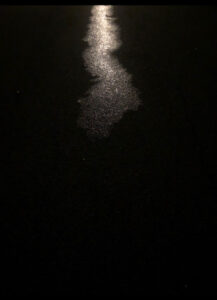
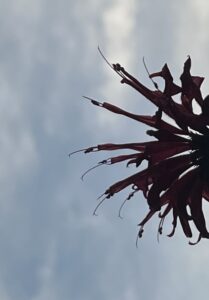

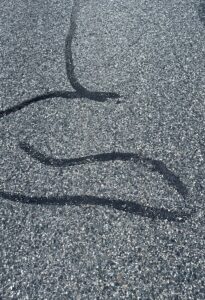





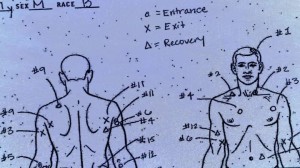 Today, November 24th, 2015, Jason Van Dyke was charged with first-degree murder in the slaying of Laquan McDonald in Chicago, Illinois. We all should be charged for the same thing. I won’t argue with anyone who wants to call Jason Van Dyke a bad apple, but the problem is larger than that.
Today, November 24th, 2015, Jason Van Dyke was charged with first-degree murder in the slaying of Laquan McDonald in Chicago, Illinois. We all should be charged for the same thing. I won’t argue with anyone who wants to call Jason Van Dyke a bad apple, but the problem is larger than that.
